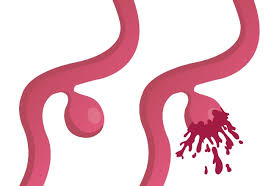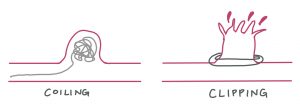If you experience a sudden and severe headache, be careful! It could be an intracranial aneurysm. An intracranial aneurysm is the ballooning of a weakened blood vessel in the brain, which causes an intense headache upon rupturing. In 2011, a study suggested that nonsteroidal anti-inflammatory drugs (NSAIDs) may be an alternative to surgical repair, which is currently the only treatment for aneurysms.

Unruptured aneurysm (left) vs. Ruptured aneurysm (right)
(Credit: Mayo Clinic)
How can NSAIDs help combat aneurysms?
Inflammation is a major problem for intracranial aneurysms, as it can lead to their growth and rupture – but there is a solution! NSAIDs reduce inflammation by inhibiting the enzymes that promote inflammation and enlarge intracranial aneurysms. The study tested NSAIDs in mice and found decreased formation of intracranial aneurysms in the mice.
Risks associated with NSAIDs and surgical repair
Although this treatment seems promising, long-term use of NSAIDs may lead to cardiovascular and gastrointestinal side effects. There are two surgical options to treating aneurysms: endovascular coiling and clipping. A major risk for coiling is that it may develop vasospasm, which occurs when the vessel constricts and leads to tissue death; whereas clipping increases the risk of infection and death, as it is an open surgery.

Two surgical procedures: Coiling an unruptured aneurysm (left) vs. Clipping a ruptured aneurysm (right)
(Created by Athena Wang)
Lifestyle changes to prevent rupture
With around 3% of the population having unruptured aneurysms, it is beneficial to know what lifestyle changes can prevent these ruptures. Eating a healthier diet, exercising regularly, and avoiding recreational drugs can all decrease risk factors that trigger ruptured aneurysms.
How is this headache different from a “normal” one?
Normal headaches such as those caused by tension or migraines is less intense than that of an aneurysm, which is described as a thunderclap headache. More importantly, this headache may be accompanied by a stiff neck, vomit, or even a loss of consciousness.
So, the next time you feel like you’re having the worst headache of your life, seek help fast – it could be an aneurysm!
-Athena Wang
